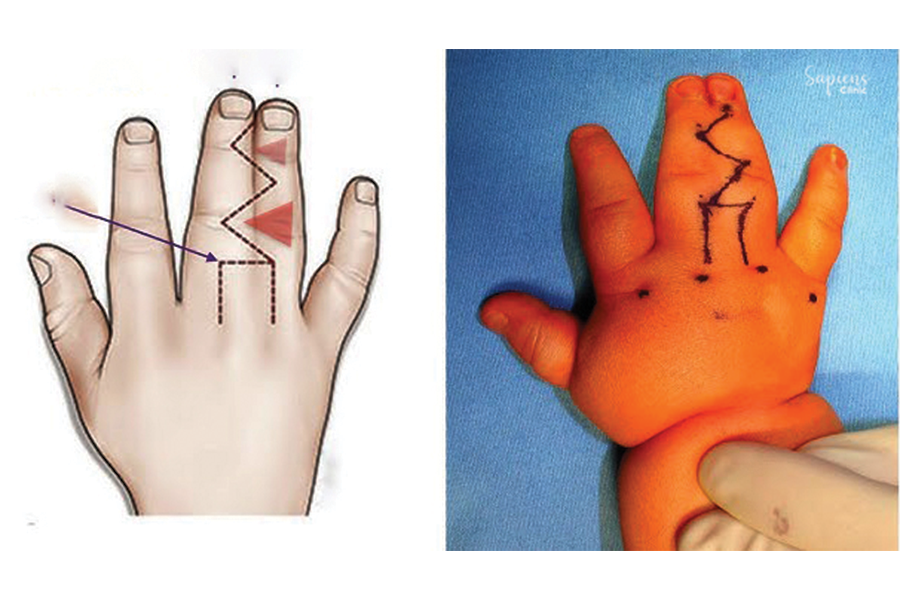Syndactyly Separation Surgery in Malleshwaram
Syndactyly, commonly known as “webbed fingers or toes,” is a congenital condition where two or more digits are fused together. At Sapiens Clinic in Malleshwaram, we specialize in the surgical separation of fused digits, aiming to restore optimal function and appearance to the hands or feet.
Understanding Syndactyly
Syndactyly occurs when digits fail to separate during fetal development. The condition can be :
- Simple: Involving only soft tissue fusion.
- Complex: Involving bones and nails.
It can also be classified as:
- Complete: Fusion extends to the fingertips.
- Incomplete: Fusion stops before the fingertips.
Syndactyly can occur in isolation or as part of syndromes like Apert syndrome.
Causes and Risk Factors
While the exact cause of syndactyly is often unknown, factors include :
- Genetic Mutations: Inherited or spontaneous changes in genes.
- Syndromic Associations: Conditions like Apert syndrome.
A family history of syndactyly increases the risk.
Symptoms
Symptoms vary based on the type and extent of fusion:
- Physical Appearance: Fused fingers or toes.
- Functional Limitations: Difficulty in grasping or walking.
- Nail Abnormalities: Shared or deformed nails in fused digits.
In some cases, syndactyly may affect both hands or feet.
Diagnosis
Diagnosis involves :
- Physical Examination: Assessing the extent of fusion.
- Imaging Studies: X-rays to determine bone involvement.
- Genetic Testing: If a syndromic condition is suspected.
Early diagnosis allows for timely intervention and better outcomes.
Treatment Options
Surgical Separation
Surgery is the primary treatment for syndactyly, typically performed between 6 months and 2 years of age. The procedure involves :
- Incision: Careful cutting to separate the fused digits.
- Skin Grafting: Using grafts to cover exposed areas.
- Reconstruction: Restoring tendons, nerves and blood vessels as needed.
Multiple surgeries may be necessary for complex cases.
Postoperative Care
After surgery :
- Immobilization: Splints or casts to protect the area.
- Physical Therapy: Exercises to improve function and mobility.
- Regular Follow-ups: Monitoring healing and development.
Recovery times vary, but most children regain significant function within a few months.
Risks and Considerations
Potential risks include :
- Infection: Managed with antibiotics and proper care.
- Scarring: Minimized with surgical techniques and postoperative care.
- Web Creep: Recurrence of webbing, possibly requiring revision surgery.
Discussing risks with the surgical team ensures informed decision-making.
Conclusion
Syndactyly separation surgery can significantly improve the function and appearance of hands or feet. At Sapiens Clinic, Malleshwaram, our experienced team is dedicated to providing comprehensive care, from diagnosis to rehabilitation, ensuring the best outcomes for our patients.
FAQs
1. At what age should syndactyly surgery be performed?
Ideally between 6 months and 2 years to optimize outcomes.
2. Will my child need more than one surgery?
Complex cases may require multiple procedures.
3. What is the recovery time after surgery?
Most children recover within a few months, with therapy aiding in regaining function.
4. Are there non-surgical treatments for syndactyly?
Surgery is the primary treatment; non-surgical options are limited.
5. Can syndactyly recur after surgery?
There’s a possibility of web creep, which may necessitate revision surgery.

Leave a Reply